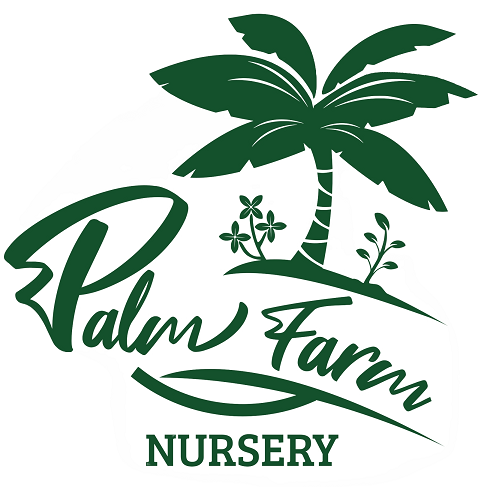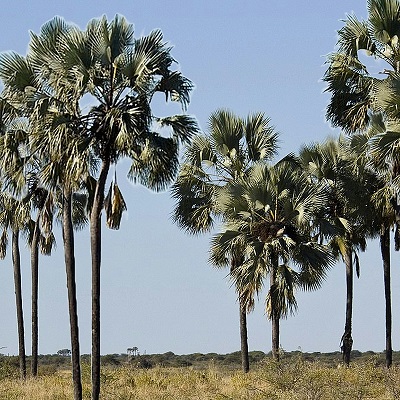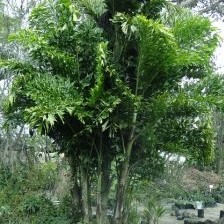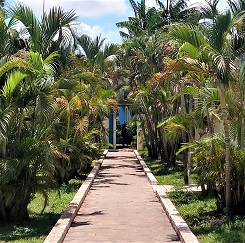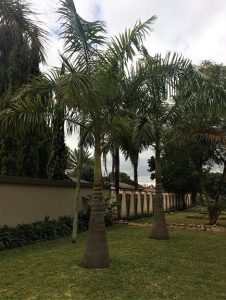Hyphaene petersiana (Real Fan Palm or Makalani Palm)
Hyphaene petersiana, the real fan palm, native to the subtropical, low-lying regions of south-central Africa, thrives in open woodlands, flood plains, riverbanks, and the fringes of pans and swamps. It was named after Professor Wilhelm Peters of Berlin, a 19th-century plant collector who conducted work in Mozambique. The palm is highly valued for both its edible and practical uses. The stem pith is edible, and the fruit, beneath its fibrous husk, contains a white core of endosperm known as vegetable ivory. This core is initially soft and edible, with a liquid similar to coconut milk. Children especially enjoy the sweet, gingery flavor of the thin layer of ripe fruit on freshly fallen nuts. Various parts of the palm are used in everyday life—palm fronds are woven into thatch, baskets, hats, fans, and mats, while the central ribs are used in kraal fencing and hut construction. The plant’s fibers are twisted into ropes and strings for musical instruments, and the pulp is traditionally used to treat stomach aches and intestinal worms. Ribs and flower stalks are often used as fuel for cooking. The palm nuts, referred to as “vegetable ivory,” have hard, white kernels that can be carved into buttons and decorative items, popular among tourists.
4 in stock
ZK600.00
4 in stock
The real fan palm is a very hardy and easy-to-care-for plant. It thrives in full sun and requires average watering. Although it is drought-tolerant once established, it grows much faster with regular feeding using compost or fertilizer, along with consistent watering—especially during the growing season, which runs from August to April.
